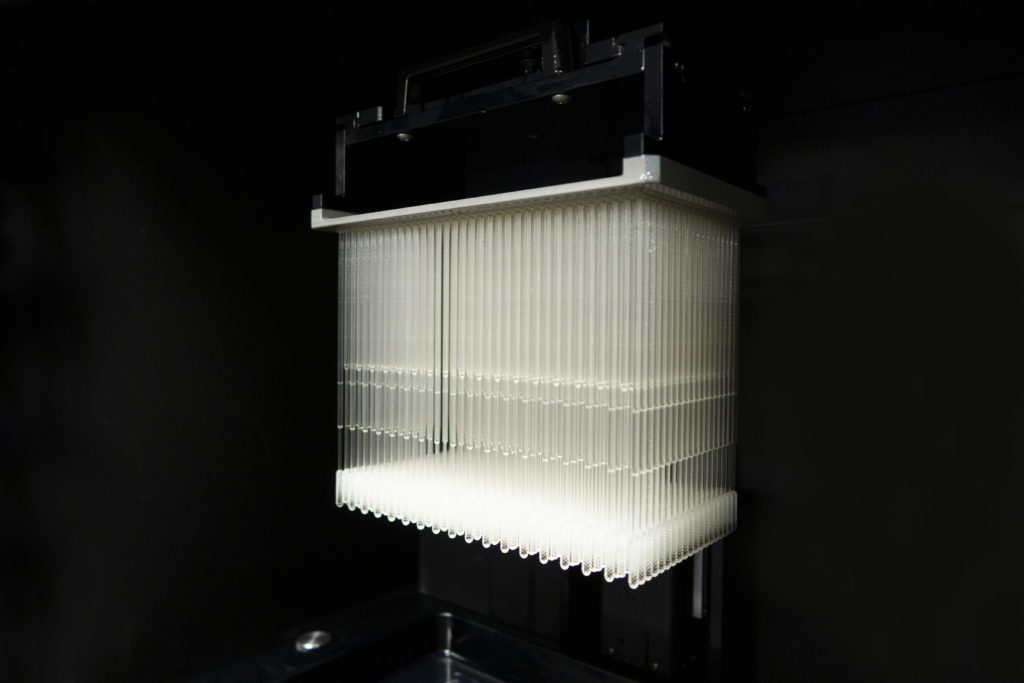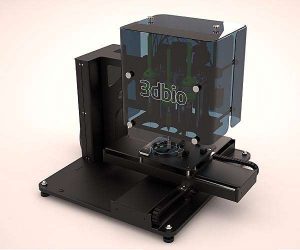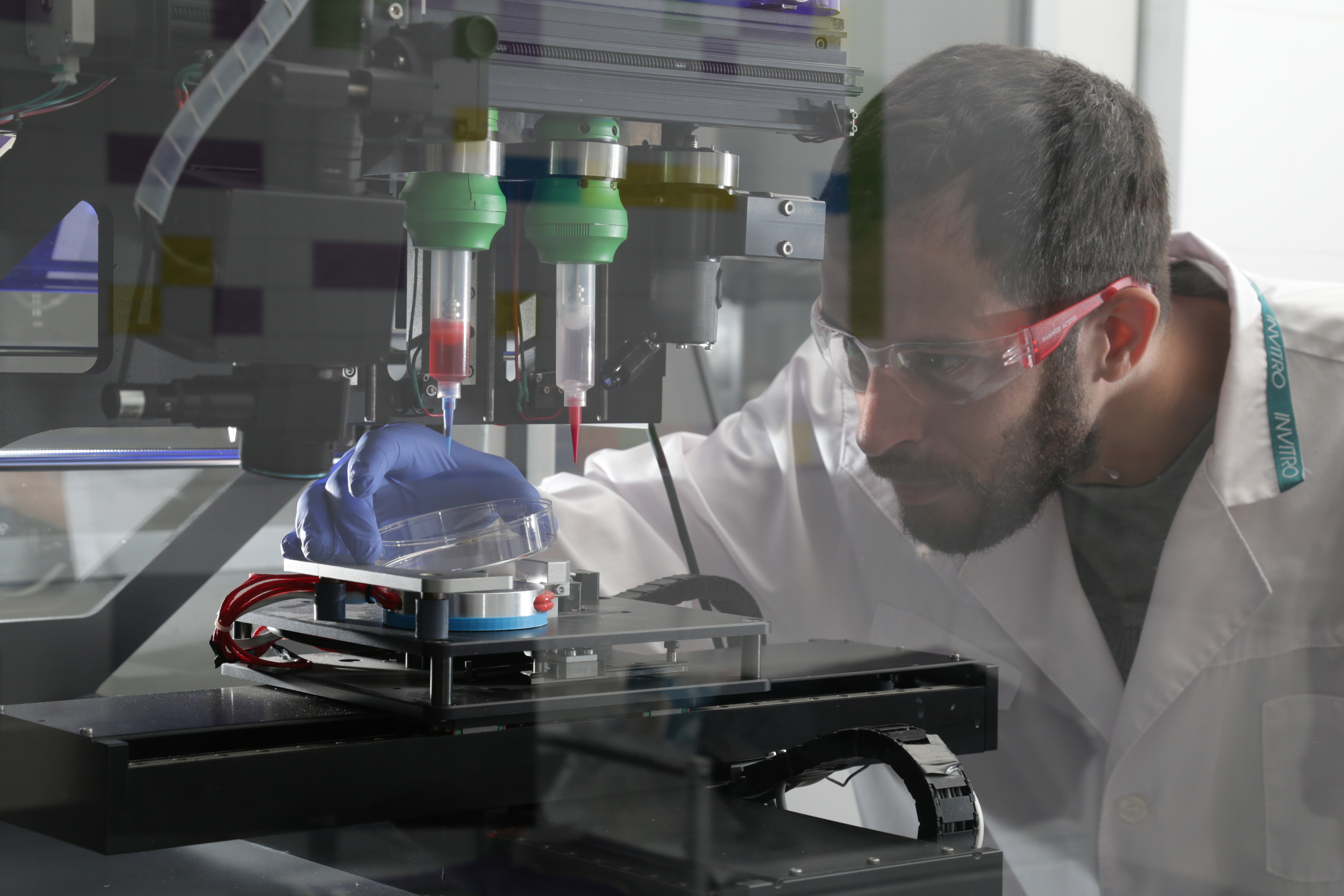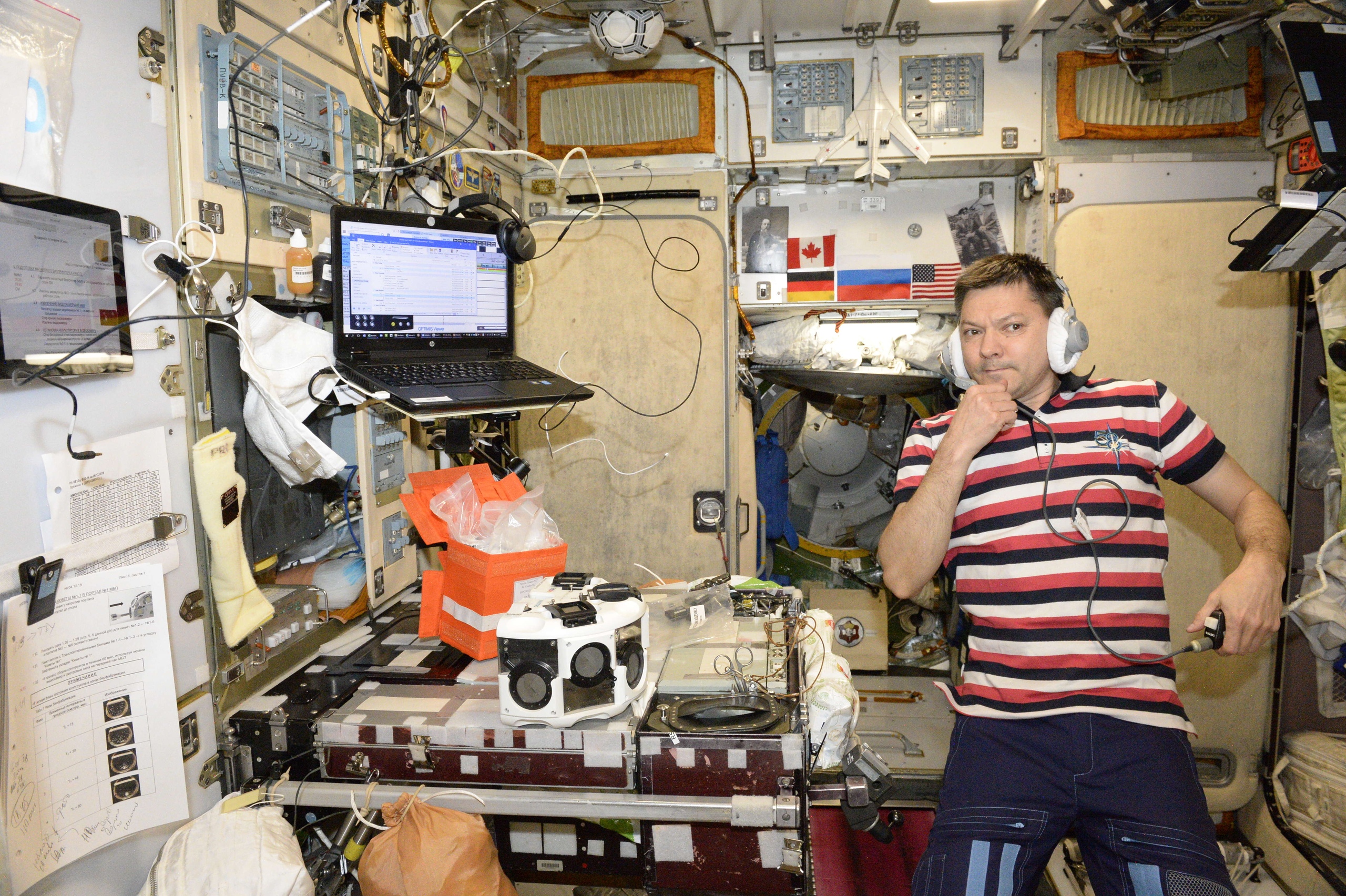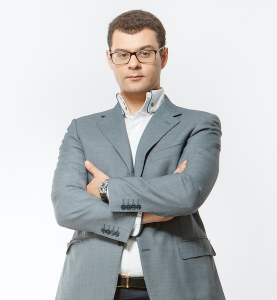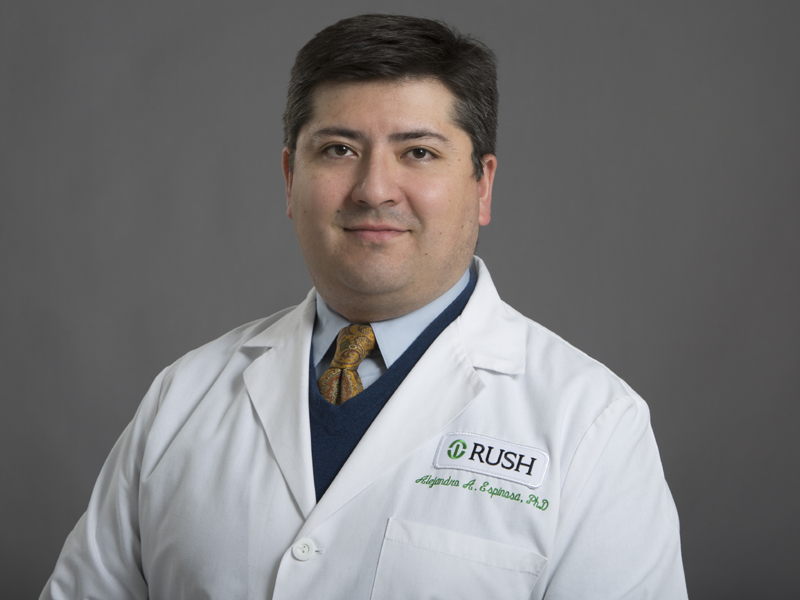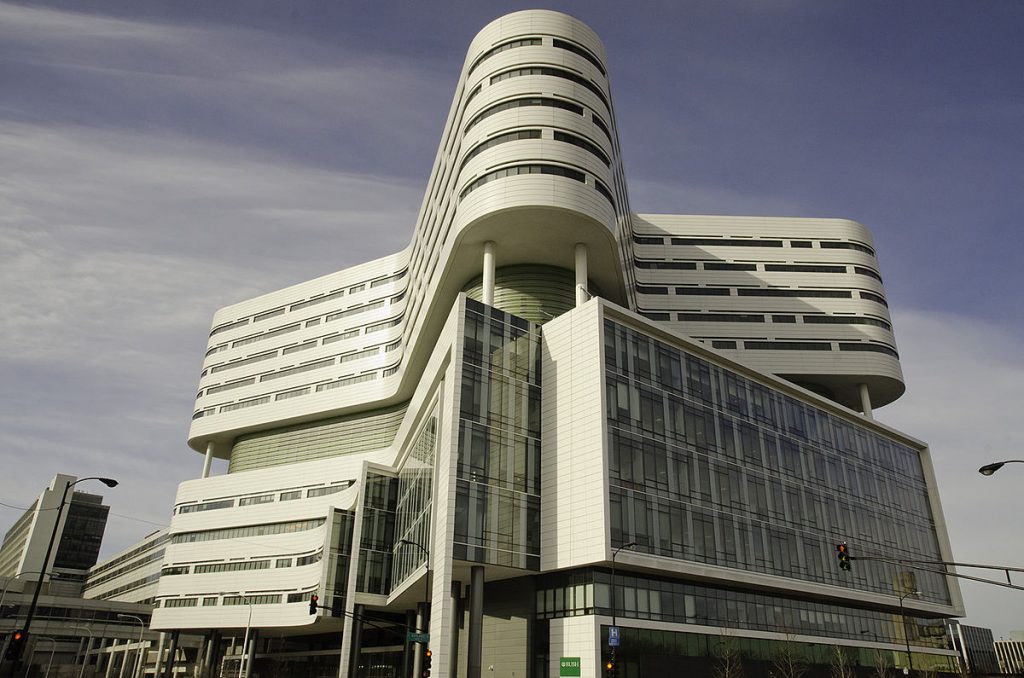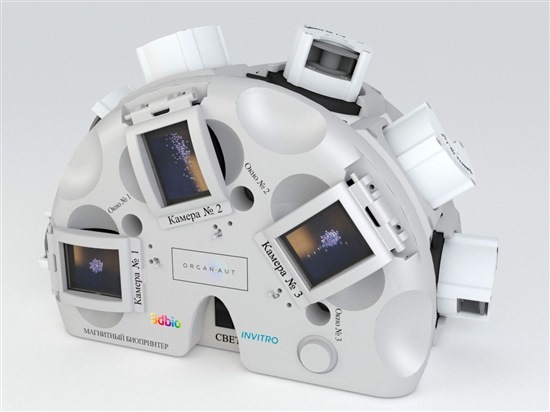3D Printing and COVID-19, June 8, 2020 Update: Canon, Creatz3D, Carima, 3D Bioprinting Solutions
Companies, organizations and individuals continue to attempt to lend support to the COVID-19 pandemic supply effort. We will be providing regular updates about these initiatives where necessary in an attempt to ensure that the 3D printing community is aware of what is being done, what can be done and what shouldn’t be done to provide coronavirus aid.
Canon has been in the additive space for some time, dating at least as far back as 2014, when Canon Marketing began reselling 3D Systems technology in Japan. Now, Canon Marketing Japan (Canon MJ) has announced that it will offer contract manufacturing as well, spurred by the medical supply crisis associated with COVID-19. The company is utilizing its 3D printing network to provide on-demand production of medical items, beginning with resin parts. Testing the market further, Canon MJ will expand to offer further materials and printing methods.
3D Bioprinting Solutions (3DBio) is working to address the pandemic by enabling the testing of anti-COVID-19 drugs. The company has developed scalable production of 3D lung tissue spheroids modeled on human lung adenocarcinomas, human colorectal adenocarcinoma and African green monkey kidney cells. The 3D spheroids have been given to virologists to infect with the SARS-CoV-2 virus for testing pharmacological molecules.
U.K. startup Fractory is using sheet metal manufacturing to produce a universal tool made from CZ108, antimicrobial grade brass with 64 percent copper content, that enables the hands-free operation of doors, cabinets, fridges, cash machines, elevators and other objects in public life. Dubbed the SafeKey, it even acts as a bottle opener and wrench.
Alongside such companies as EnvisionTEC, HP, Origin, Carbon and Formlabs, South Korea’s Carima is also 3D printing nasopharyngeal swabs for SARS-CoV-2 testing. Via its partner company ‘T’ in the U.S., the company is making an average of 15,000 swabs daily with a goal of ramping up production to 25,000 per day. Additionally, the company is 3D printing face shields for healthcare professionals.
While some companies are 3D printing nasal swabs for SARS-CoV-2 testing, Singapore’s Creatz3D is 3D printing models for training personnel in the application of nasal and throat swabs. As many may now well know, this testing procedure involves inserting a very long swab into the nasal cavity, reaching it into the back of the throat, where the swab is gently rotated to collect specimens. A front-line training organization reached out to Creatz3D to 3D print life-sized medical mannequins to simulate swab collection.
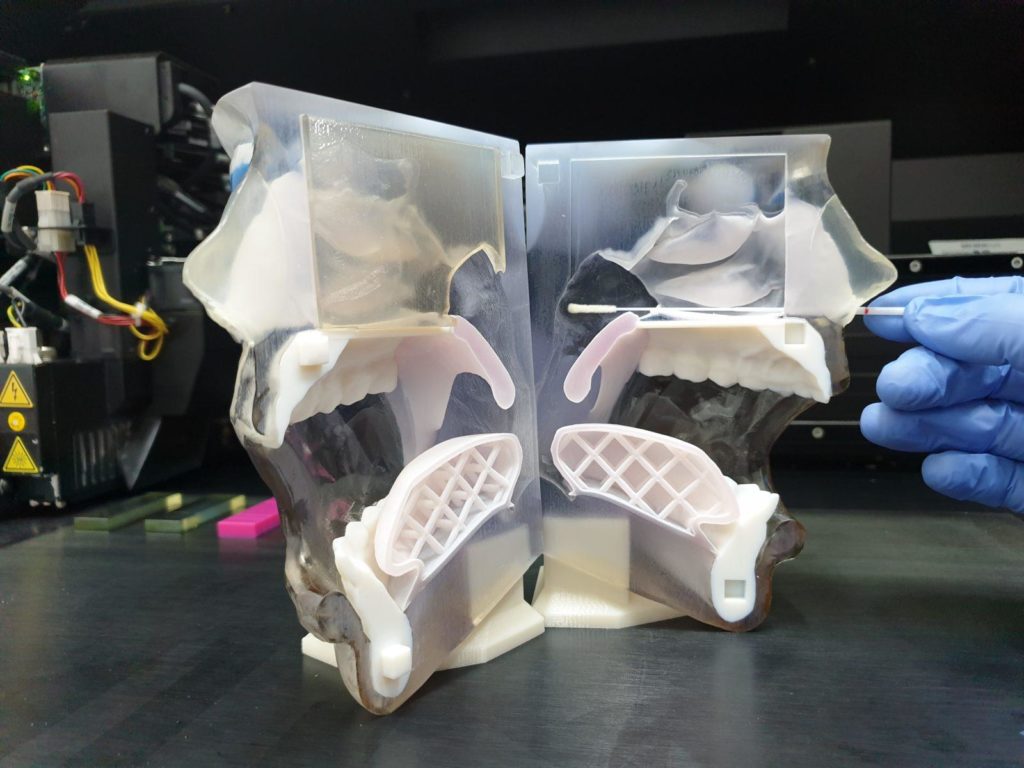
A mannequin 3D printed by Creatz3D for nasal swab testing of SARS-CoV-2. Image courtesy of Creatz3D.
Its sister company, AuMed, a bespoke medical simulator company, found models in its CT and MRI library and fused them into a single mannequin using Materialise’s Mimics Innovation Suite (MIS) Medical. The models were refined with feedback from doctors in the field before the final products were realized. Compared to opaque counterparts made with traditional techniques, the resulting, 3D-printed mannequins are partially transparent for improved training. Two varieties can be 3D printed at a lower cost than the $3,000 conventional variety in just five to seven days. Other improvements include a bounceable tongue for simulating the use of a tongue depressor.
As the pandemic continues to grip the world, we will continue to provide regular updates about what the 3D printing community is doing in response. As always, it is important to keep safety in mind, remain critical about the potential marketing and financial interests behind seemingly good humanitarian efforts from businesses, and to do no harm.
The post 3D Printing and COVID-19, June 8, 2020 Update: Canon, Creatz3D, Carima, 3D Bioprinting Solutions appeared first on 3DPrint.com | The Voice of 3D Printing / Additive Manufacturing.
Researchers create roadmap for 3D bioprinting
3D Bioprinting Solutions print bone tissue on board the ISS
3D Bioprinting Solutions: The First Bioprinting Company in Russia
3Д Биопринтинг Солюшенс, also known as 3D Bioprinting Solutions, is the only company developing b ioprinting technology and bioinks for commercial use in Russia. Back in the summer of 2014, they created the first Russian bioprinter: FABION. But there were more firsts for the company, late last year, their hardware, in the form of the OrganAut 3D bioprinter, made space history after being dispatched to the International Space Station (ISS) where Russian cosmonaut Oleg Kononenko represented his country as the first person to bioprint human cartilage tissue while in space. The Moscow-based firm is quick to become one of the big contenders of European biotechnologies, so 3DPrint.com spoke to co-founder Yusef Khesuani about how the company is preparing for the next steps in innovative biofabrication.
ioprinting technology and bioinks for commercial use in Russia. Back in the summer of 2014, they created the first Russian bioprinter: FABION. But there were more firsts for the company, late last year, their hardware, in the form of the OrganAut 3D bioprinter, made space history after being dispatched to the International Space Station (ISS) where Russian cosmonaut Oleg Kononenko represented his country as the first person to bioprint human cartilage tissue while in space. The Moscow-based firm is quick to become one of the big contenders of European biotechnologies, so 3DPrint.com spoke to co-founder Yusef Khesuani about how the company is preparing for the next steps in innovative biofabrication.
“Right now we are finishing our first set of space experiments with biofabrication of protein crystals, biofilms and cultured meat constructs onboard the ISS,” revealed Khesuani. “And by the end of this year, we plan to implement an in-situ bioprinter, which would combine a medical robotic arm and classic bioprinting extrusion technologies, allowing us to perform medical procedures and treat defects inside surgery rooms, and we plan to start with treating skin defects in mice.”
The ambitious resume is part of the company’s core purpose of advancing tissue engineering. Originally supported by the Moscow Healthcare Department and founded by INVITRO, the largest private medical lab chain in Eastern Europe, 3D Bioprinting Solutions has been delving into 3D printed organ transplants on mice for quite a while. Successfully bioprinting thyroid glands to transplant into living mice. The scientists, led by head researcher Vladimir Mironov, chose a thyroid gland as this organ is relatively simple, making it an uncomplicated subject for research work.
The bioprinting and successful transplantation of living functional mouse’s thyroid gland construct were done using FABION, a bioprinting method using nanotechnology that no longer requires the organic or artificial scaffold on which the cells are placed. But the company has since moved onto the FABION 2, a printhead, capable of bioprinting with single tissue spheroids.
“The FABION 2 bioprinter is part of the next generation, as it iterates on the same ideas [as FABION] and brings new functionality. It’s able to print complex structures using tissue spheroids and a wide range of hydrogels with different types of polymerization like thermosensitive hydrogels, multi-component hydrogels, photosensitive, Ph-sensitive and ionic-sensitive hydrogels,” explained Khesuani.
“The key technological feature of the FABION 2 is high-speed printing with single tissue spheroids managed by a special device, developed by 3D Bioprinting Solutions. This proprietary device’s core element is a print head which operates as a “turnstile” controlling the injection and printing of single tissue spheroids. The competitive edge of this printing method is provided by the high cell density as well as the synthesis of extracellular matrix proteins within spheroids creating highly viable functional tissue constructs. Printing dispensers are calibrated using a unique laser positioning system with an unrivalled positioning accuracy of 5 μm, enabling FABION 2 to print highly complex structures,” went on the expert, who is Managing Partner of the Laboratory for Biotechnological Research of 3D Bioprinting Solutions.
With FABION 2 being launched in 2016, the science and engineering team at 3D Bioprinting Solutions started focusing their efforts on a fundamentally new type of bioprinter, based on magnetic levitation in a controlled magnetic field, which would allow programmable self-assembly of tissue and organ constructs without solid scaffolds. The first prototype of this device saw the light in autumn of 2016, one year later the unique device became the OrganAut. After the first version of the printer was destroyed when the Russian spacecraft Soyuz MS-10 crashed due to a malfunction during liftoff, the company had already a second version prepped for liftoff. The second run was successful and on December 3, 2018, the bioprinter was delivered to the ISS onboard the Soyuz MS-11 manned spacecraft to perform formative biofabrication of 3D tissue and organ constructs in microgravity. For the first time in orbit, cosmonaut-researcher Kononenko printed human cartilage tissue and a rodent thyroid gland, opening up an opportunity to further expand 3D Bioprinting Solutions’ business to science (B2S) services.
According to Khesuani, the 3D printing community is pretty strong in Russia, particularly regarding materials for 3D printing, mainly for metal and SLA printing. With quite a few startups in the field of medical 3D printing, mainly dental, like 3DSmile. But in the realm of 3D bioprinting, they are the only company developing products in this field. Although he acknowledges that several research institutions have purchased commercially available bioprinters for their studies in the past few years.
Additionally, he claims that Russia has a wide range of STEM (science, technology, engineering, and mathematics) universities to collaborate with and to hire new interns and employees from. To this date, 3D Bioprinting Solutions has partnered with Moscow State University, First Moscow State Medical University, National Research Nuclear University, Moscow Institute of Physics and Technology, Stanford University, and also several undisclosed pharmaceutical and cellular agricultural companies. The company is beginning to adapt their existing technologies for cellular agriculture applications. Framework agreements have been signed with several leading startups in the field of clean meat and now they are carrying out several joint experiments using muscle cells of various species.
The 3D bioprinting community in Russia could benefit from the professionals with science, technology, engineering, and mathematics degrees that are flying off the shelves since it is one of the six countries that are vigorously turning out more STEM graduates. The World Economic Forum reported that Russia comes in at fourth place, and not far behind from the United States, in producing STEM graduates, with 561,000 students. In fact, women in Russia are entering STEM fields at a higher rate than many of their Western counterparts. If this trend keeps moving upward, bioprinting companies will benefit from the continuous inflow of professionals in the field.
3D Bioprinting Solutions is a wholly own subsidiary of VIVAX BIO, a biotech company focusing on 3D bioprinting and working on a range of hardware, materials, technologies, and products that are a part of this nascent industry. Based out of New York, VIVAX BIO is more focused on sales and marketing, while their Russian counterpart is evolving through its research and development lab. Although, Khesuani revealed that in the very near future they are also planning to open a lab in New York.
The company continues working with human cells creating 3D bioprinted tissues and organoid models for drug discovery and disease modeling as a superior alternative to traditional 2D models. Along with world-renowned scientists with a lot of experience, the company hopes to use their intellectual and financial resources a strong background to coordinate successful projects that can revolutionize the world of regenerative medicine. They expect their engineering solutions to be part of the biotechnological research that will move the medical bioprinting industry forward. Much of their work weighs heavily on anticipating how their own technologies for the development of human organs from autologous stem cells will emerge within the next 25 years, and they hope to be part of the ultimate goal of their research, which is to bioprint a human kidney.
The post 3D Bioprinting Solutions: The First Bioprinting Company in Russia appeared first on 3DPrint.com | The Voice of 3D Printing / Additive Manufacturing.
Russian scientists plan 3D bioprinting experiments aboard the ISS in collaboration with the U.S. and Israel
3D Printing Industry Expert Interview: Alejandro Espinoza Orias
Alejandro A. Espinoza Orias, PhD, received a licentiate degree in mechanical engineering degree from the Universidad Mayor de San Andres (La Paz, Bolivia) in addition to master’s and doctoral degrees in aerospace and mechanical engineering from the University of Notre Dame. He later completed a postdoctoral fellowship in spine biomechanics at the McKay orthopedic research laboratory at the University of Pennsylvania. He is an assistant professor in the Department of Orthopedic Surgery at Rush University Medical Center. His research interests include joint biomechanics, the study of structure-function relationships in orthopedic materials and tissues and applications of 3D printing in orthopedics.
Espinoza Orias is an active member of the Orthopaedic Research Society, American Society of Mechanical Engineers, American Society for Testing and Materials International, and Sigma Xi, the Scientific Research Society, He conducts peer review on many orthopedic and biomechanics journals and is on the editorial board of PLoS One.
Ese: Tell me about your educational background?
Alejandro: I became a mechanical engineer in my home country of Bolivia. Then I came to the US for grad school. I got my Masters and PhD from Notre Dame. This is where I first started learning about 3D Printing and computer-aided design.
What inspired you early on in your life to get you to this point currently?
I always liked CAD. When I got to grad school I worked on CAD projects. We made some cool prototypes and learned some rapid prototyping. I was focused on finding projects that had very interesting and applicable uses.
Explain more about what you do currently?
I do a combination of things. Having a use case for 3D printing is cool. I get to help patients with 3D printing. In my mind, all of these things are 3D problems. My lab is focusing on image based mechanics. We look at CT, XRAY, and various other imaging technologies. We are able to understand morphology more precisely through 3D visualization. It is awesome for printing and VR/AR applications. For example, If one is to get a hip replacement it is important to have precise tools that are helpful. You must plan for when you are experiencing a problem that does not fit typical anatomy. These tools can be leveraged for these type of situations where a doctor may not have the requisite historical knowledge to diagnose a newer and atypical defect.
What is the future scope of your lab?
We want to be a large lab to print for hospitals. The idea would be to have a center where you can have a lab that has a focus on very good visualization. That is the most important for our future I believe. Complicated systems and complications happen in various fields. We want to be able to break down these systems. It is important to have great visualization as this field is always oriented in how great an image looks.
What is important for someone who wants to work in a lab?
Be curious and ask why. Be good with computers. Be able to think in 3 dimensions. Be able to completely understand anatomy. This type of work is very hands on. It is helpful to have that skill. One should be looking at how things work. How to make things is really important.
Where do you see the field going?
There is a focus on new materials. Printers are able to do even more detailed things. Biomimicry is huge. There is a lot of people doing the same methods as well though. In general the industry is attempting to adopt this. A need for high-end printers is not that necessary in every setting. Different industries are becoming aware. The key is to focus on materials. We want to print a product. Post processing is very important. Companies are focusing on the importance of finishing products now. It is a very interesting development.
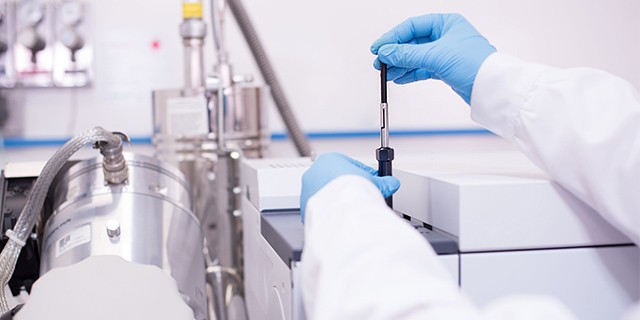 Bioprinting in the lab setting
Bioprinting in the lab setting
What mindset do doctors bring to the field of bioprinting?
People from different backgrounds can be a medical doctor. Doctors focus on caring for patients as that is their passion. It is a lot of varied talent. Surgeons are usually good carpenters. Radiologists are an analytical bunch. In the area I intersect with, radiologists are important as they know how to make images. MD & PhD holders are not all interested in necessarily practicing medicine. They are typically great at research. This field is very interdisciplinary. Leveraging all the talent is essential.
What advice do you have for anyone who is interested in this field?
Be passionate about new technology. Be a hands-on person. It is important to know how to make your own tools. Be open to helping others. This is a patient-driven field. Really push yourself to think in 3 dimensions. It is the key to being excellent within this field. Just be ready for the changes in technology as this field is rapidly developing on a constant basis.
From Human Cartilage to Rodent Thyroids: Russian Cosmonaut Is First to Bioprint in Space
Bioprinting in space has been a concept we’ve heard about recently, but as is often the case with 3D printing technology, there was only a very short build-up before it actually happened! But why, you may ask yourself, do we need to bioprint in space? Can’t we perform such complex tasks down here on terra firma? The answer is that of course researchers can—and they do—but studies regarding bioprinting in space have shown that it may be more effective in a microgravity atmosphere. At the same time extendes decades long expeditions to other planets will require bioprinting on board to heal sick astronauts.
The International Space Station would be the most obvious place for such exercises to take place, and just last month, Russian cosmonaut Oleg Kononenko represented his country in being the first to bioprint while in space. Using a 3D printer which has been created for the space environment, Kononenko was able to produce both human cartilage tissue, along with a rodent thyroid gland. Both 3D Bioprinting Solutions and Roscosmos created the hardware responsible for making space history, in the form of the Organaut 3D bioprinter. US researchers are still on track for their own space bioprinting endeavors, slated for 2019.
Bioprinting has become a central focus within the medical arena as 3D printing began to hit the mainstream, demonstrating the potential for infinite, innovative opportunities. And the environment is key when it comes to the development of fragile cells which are often not easily sustained, even in the best of research labs. The Organaut bioprints by extruding materials from a syringe, allowing cells to grow into a form which may not be as similar to their normal state as researchers always wish; however, this can be more possible thanks to microgravity. The printer was finally delivered to the ISS following a failed mission last October aboard the Soyuz MS-10 spacecraft.
Researchers are extremely curious about how microgravity benefits bioprinting and more successful cell and tissue growth, along with recent interest in using such technology in space to examine other medical issues and questions—like those regarding radiation and the human body.
“We will look at how the constructs came together, and how they behaved,” said Usef Hesuani, head of laboratory projects and a managing partner of 3D Bioprinting Solutions.
Bioprinting continues to progress thanks to scientists around the world as tissue is created to further medical studies. The larger picture though includes being able to fabricate human organs in the lab, eventually. Such innovation could have enormous impacts on very ill patients who would no longer be at the mercy of organ donor waiting lists. Along with that, 3D printed organs offer the possibility of patient-specific care that could mean an end to the worry about infection, rejection, and so many of the intense complications that make healing difficult for individuals who have received transplants.
 3D BioPrinting Solutions is owned by INVITRO, boasting 8 labs and 1,000 offices throughout Europe, with a base in Skokovo. The company is already renowned for their work in bioprinting, due to the fabrication of a mouse thyroid gland in 2015. This work propelled them further to their work at the ISS, essentially doing work they were already quite familiar with.
3D BioPrinting Solutions is owned by INVITRO, boasting 8 labs and 1,000 offices throughout Europe, with a base in Skokovo. The company is already renowned for their work in bioprinting, due to the fabrication of a mouse thyroid gland in 2015. This work propelled them further to their work at the ISS, essentially doing work they were already quite familiar with.
“We have companies that are making satellite platforms…it is possible to conduct a similar experiment amid microgravity on small spacecraft [like satellites]…smaller and cheaper,” said Ivan Kosenkov, 3D Bioprinting Solutions’ project manager.
What do you think of this news? Let us know your thoughts! Join the discussion of this and other 3D printing topics at 3DPrintBoard.com.
[Source: Teslarati]
3D printing news Sliced: CERN, HP Foundation, APWORKS, Phrozen, Etch-a-Sketch
3D Printing with Magnets in Microgravity
 While methods of 3D bioprinting vary, most of them have one thing in common – they print cells layer by layer into a desired shape, which is then transferred to an incubator where it further grows and develops. Alternative methods exist, however, that involve the manipulation of the cell material by magnetic fields. The cells are then “labeled” with magnetic nanoparticles. But now a Russian research team has developed a new method of bioprinting that neither prints layer by layer nor uses magnetic labeling. This method could lead to the creation of radiation-sensitive biological constructs and the repair of organs and tissues.
While methods of 3D bioprinting vary, most of them have one thing in common – they print cells layer by layer into a desired shape, which is then transferred to an incubator where it further grows and develops. Alternative methods exist, however, that involve the manipulation of the cell material by magnetic fields. The cells are then “labeled” with magnetic nanoparticles. But now a Russian research team has developed a new method of bioprinting that neither prints layer by layer nor uses magnetic labeling. This method could lead to the creation of radiation-sensitive biological constructs and the repair of organs and tissues.
The new method, which involves magnetic levitation research in conditions of microgravity, was conducted by the 3D Bioprinting Solutions company in collaboration with other Russian and foreign scientists, including the Joint Institute for High Temperatures of the Russian Academy of Sciences (JIHT RAS).
“During the period from 2010 to 2017, a series of experimental studies were carried out aboard the Russian Orbital Segment of the International Space Station with the Coulomb Crystal experimental device,” said Mikhail Vasiliev, head of the laboratory of dusty plasma diagnostics in JIHT RAS. “The main element of the device is an electromagnet that creates a special inhomogeneous magnetic field in which the structures of the diamagnetic particles (they are magnetized against the direction of the magnetic field) can be formed in the microgravity conditions.”
The research was documented in a paper entitled “Scaffold-free, label-free and nozzle-free biofabrication technology using magnetic levitational assembly,” which you can access here. In the study, the researchers describe how small charged particles behave in the magnetic field of a special shape under microgravity or zero-gravity conditions. They also developed a mathematical model of this process based on the methods of molecular dynamics. These results explain how to obtain homogeneous and extended three-dimensional structures consisting of thousands of the particles.
Conventional methods of magnetic 3D bioprinting had several limitations associated with gravity. There are a couple of ways to reduce the power of gravitational forces, one being to increase the power of the magnets that control the magnetic field. This will, however, require a much more complex bioprinter. Another way is to reduce the gravity, which is the approach used by the scientists from 3D Bioprinting Solutions. The method is called formative three-dimensional biofactory, which creates three-dimensional biological structures immediately from all sides, rather than in layers.
 The researchers applied the experimental data and the results of the mathematical modeling obtained by the JIHT RAS scientists in order to control the shape of the structures.
The researchers applied the experimental data and the results of the mathematical modeling obtained by the JIHT RAS scientists in order to control the shape of the structures.
“The results of the Coulomb crystal experiment on the study of the formation of the spatially ordered structures led to the development of a new method for the formative 3-D biofactory of the tissue-like structures based on the programmable self-assembly of the living tissues and organs under the conditions of gravity and microgravity by means of an inhomogeneous magnetic field,” said Vasiliev.
Bioprinters based on this new technology will be able to create biological constructs that can be used for many purposes, including estimating the adverse effects of space radiation on the health of astronauts on long-term space missions. It should also be able to restore the function of damaged tissues and organs.
Authors of the paper include Vladislav A. Parfenov, Elizaveta V. Koudan, Elena A. Bulanova, Pavel A. Karelkin, Frederico DAS Pereira, Nikita E. Norkin, Alisa D. Knyazeva, Anna A. Gryadunova, Oleg F. Petrov, Mikhail M. Vasiliev, Maxim I. Myasnikov, Valery P. Chernikov, Vladimir A. Kasyanov, Artem Yu Marchenkov, Kenn Brakke, Yusef D. Khesuani, Utkan Demirci, and Vladimir A. Mironov.
Discuss this and other 3D printing topics at 3DPrintBoard.com or share your thoughts below.
[Source: Phys.org]

